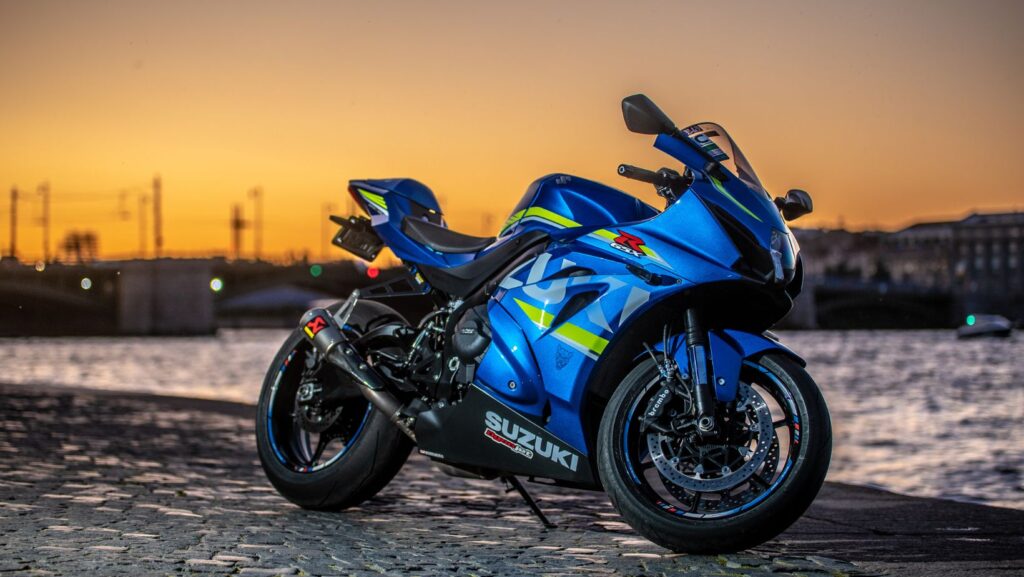Dreaming of an epic cross-country bike tour, but don’t know where to begin?
Long-distance bike travel is one of the most incredible ways to experience the world. Slow down to take in destinations at a human-powered pace, build genuine connections with local communities, and challenge your body and mind.
The only catch? It takes a bit of extra preparation.
Here’s the problem:
Impulse long-distance bike travel is all-too-common. The result is frustration: flat tires, overburdened gear, grueling physical challenges, lost navigation, and sometimes even quitting in the middle of your dream trip.
Good news is: those mistakes are totally avoidable with a bit of pre-planning.
A recent study found 35% of Americans rode a bike at least once in 2024. So whether it’s a quick neighborhood ride or a month-long bikepacking journey, it’s no surprise that cycling is one of the most popular American pastimes.
But long-distance bike travel is a different ballgame. It takes time, money, and thoughtfulness to plan and execute the perfect itinerary.
What you’ll learn:
- Gear and Equipment for Long-Distance Bike Adventures
- Choosing the Right Bike for the Journey
- Training & Physical Prep for the Body
- Route Planning and Navigation for Adventure Travel
- Safety Tips & Emergency Preparedness
Step 1: Choosing the Right Bike for the Journey
Here’s the harsh truth: your bike is going to be your best companion (or worst enemy) for thousands of miles on the road.
Getting the correct bike setup from your favorite bike shop in Gaithersburg or a trusted local shop is the difference between an amazing adventure or a terrible bikepacking journey.
Here are your three main options for long-distance bike travel:
- Touring bikes – built specifically for loaded long-distance travel
- Gravel bikes – a versatile option for mixed terrain adventures
- Bikepacking bikes – lightweight minimalist setup
Touring bikes are the gold standard for a reason. Designed to carry heavy loads over long distances, steel frames provide durability and a smooth ride while multiple mounting points make it easy to attach racks and panniers.
However, don’t just buy any random touring bike…
It’s essential to match your specific adventure. Sticking to paved roads or hitting some dirt trails? Sleeping in a tent every night or booking a hotel? These factors affect bike choice.
Bike Features Needed for Long-Distance Bike Travel
Essential features that any adventure bike must-have:
- Multiple gear ratios to climb steep hills with full load
- Reliable disc brakes for all weather conditions
- Sturdy wheels with a minimum of 32 spokes to support extra weight
- Comfortable geometry that won’t punish your back after 8 hours in the saddle
- Multiple mounting points for racks, water bottles, and more
Pro Tip: Get a professional bike fit before your trip. Sitting on an improperly fit bike for 6-8 hours a day will lead to pain and injury.
Step 2: Gear and Equipment for Long-Distance Bike Adventures
Here’s a secret that separates successful bike adventurers from people who quit early in their trips:
Smart gear choices.
You don’t need to own every bike gadget or newest accessory. But you need the right quality essentials that won’t fail you when you’re 50 miles from the nearest store.
Clothing and Protection
- Padded cycling shorts – Yes, you will need them.
- Moisture-wicking base layers – No cotton allowed
- Waterproof jacket – The weather changes quickly
- Quality cycling gloves – Prevent numbness and blisters
- Helmet & safety gear – Never compromise
Shelter and Camping
If you’ll be camping to save money (highly recommended), you need:
- Lightweight tent for easy setup & takedown
- Compact sleeping bag rated for expected temperatures
- Sleeping pad for comfort & insulation
- Portable stove to cook hot meals
- Water filtration system for safe drinking water
Repair Tools and Maintenance
Here’s a mistake most people make: they overpack tools or don’t bring enough.
Must-have repair items:
- Multi-tool with hex keys, chain tool, and tire levers
- Spare tubes (at least 3 for long stretches of remote roads)
- Tire patch kit for multiple flats
- Spare tire in case of catastrophic failure
- Chain lube for smooth shifting
- Duct tape for emergency fixes
Step 3: Train and Prepare the Body for Long-Distance Bike Travel
Think you can hop on any bike and ride 2,000 miles?
Think again.
Long-distance bike travel requires serious physical preparation. But good news: you don’t need to be a professional athlete.
Build Base Fitness
Start training at least 3 months before the big trip:
- Month 1: Focus on consistency with 3-4 weekly rides of 10-20 miles
- Month 2: Build up distance to 20-40 miles, include one longer weekend ride
- Month 3: Practice riding 2 consecutive days with full gear load
Key is gradual progression. Your body needs time to adapt to extended hours in the saddle.
Training with the Full Gear Load
Here’s the biggest tip: train with the exact same gear you plan to carry on your trip.

A loaded touring bike handles very differently than a lightweight road bike. The extra 40-60 pounds affects:
- Braking distance
- Climbing power
- Cornering stability
- Overall fatigue
Make sure to do several full overnight trips with your complete setup before tackling anything longer.
Step 4: Route Planning that Actually Works
Here’s the biggest mistake beginners make with long-distance bike travel plans:
They pick routes that are too ambitious for their current fitness level.
Surprise, surprise. Bike tours require advanced physical capabilities. A study showed 63% of bike tours in Europe use touring bicycles specifically for the infrastructure they provide for success.
Realistic Daily Distance Expectations
What is reasonable for long-distance travelers:
- Beginner: 30-50 miles per day
- Intermediate: 50-80 miles per day
- Experienced: 80+ miles per day
Factor in rest days, weather issues, and mechanical problems. Better to underestimate travel time than be stressed about pushing for an unrealistic daily goal.
Route Planning Tools and Resources
Essential apps and resources:
- Adventure Cycling Association maps for trusted routes
- Ride with GPS for on-screen turn-by-turn navigation
- iOverlander app for finding bike-friendly lodging
- Local cycling groups and forums for insider tips
Step 5: Safety and Emergency Preparedness
Here’s a tip no one else will tell you:
The biggest safety risk for long-distance bike travelers isn’t traffic or mechanical failure. It’s the poor decisions we make when tired, hungry, stressed, or feeling vulnerable.
Emergency Communication and Navigation
Always have on-hand:
- GPS device with offline maps (phones die)
- Emergency contact list with local numbers
- Physical maps as backup navigation
- Satellite communicator for out-of-cell zones
Health, Safety, and First Aid
Key first aid items to have on hand:
- Basic wound care supplies
- Pain relievers for aches/inflammation
- Electrolyte replacement for hydration
- All personal medications plus spares
- Emergency contact info
Money and Documentation
Keep these in waterproof packing:
- Multiple payment methods (cash, cards, digital)
- Identification documents with copies stored separately
- Emergency cash in hidden places
- Travel insurance info with 24/7 number
Conclusion: Wrap Up and Prepare for Adventure
Long-distance bike travel isn’t just about the gear or the training.
It’s about smart pre-planning that allows you to enjoy the adventure itself without worrying or being disappointed by challenges.
The cyclists who have the best adventures:
- Choose the right bike & get it professionally fitted
- Pack smart with quality gear that won’t fail
- Train their body for the physical demands
- Plan routes that match their fitness level
- Prepare for emergencies without paranoia
Your first long-distance bike adventure doesn’t have to be a coast-to-coast trip across a continent. Start small, with a weekend trip. Build up your experience and skills over time.
The world is waiting for you. With proper preparation, your bike can take you to places that will create memories to last a lifetime.
Stop reading and start planning your own adventure.


